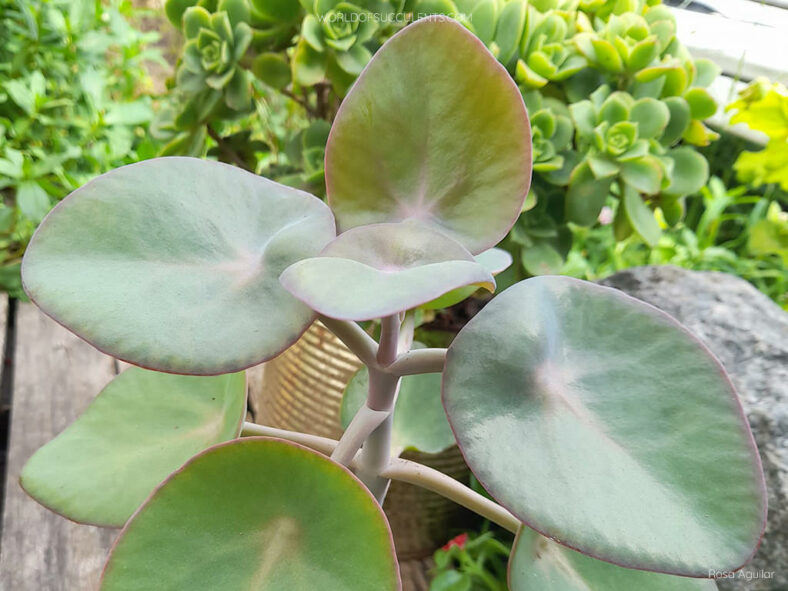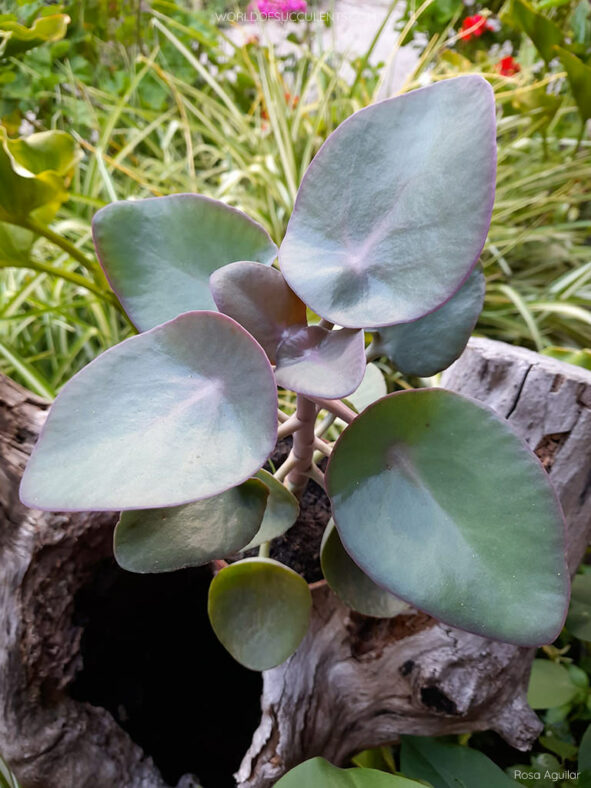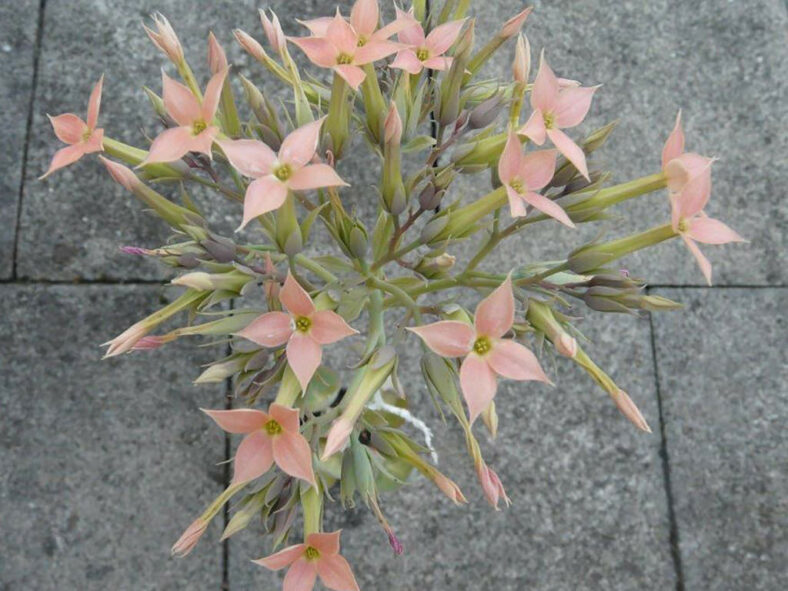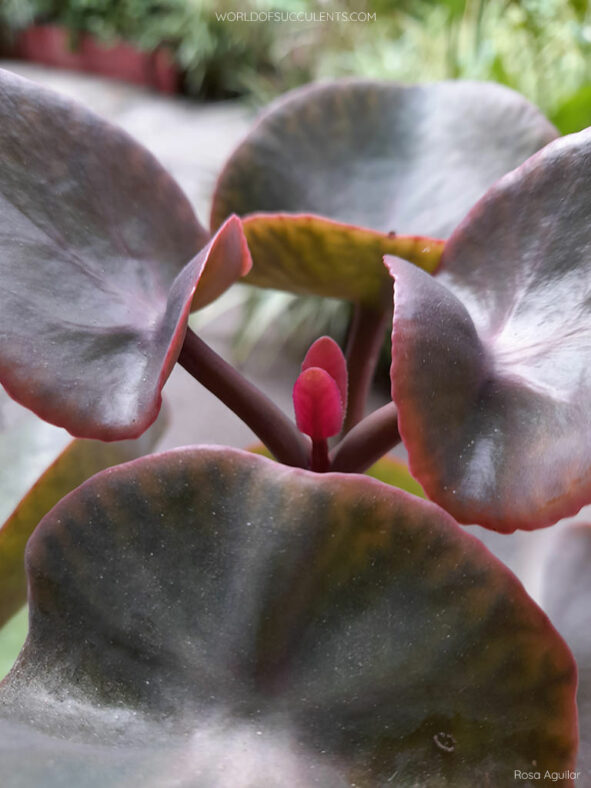Kalanchoe nyikae is a little-known species from East Africa. It was first described in 1895 by the German botanist Heinrich Gustav Adolf Engler (1844-1930).
Scientific Name
Kalanchoe nyikae Engl.
Synonym(s)
Kalanchoe hemsleyana
Scientific Classification
Family: Crassulaceae
Subfamily: Sedoideae
Tribe: Kalanchoeae
Genus: Kalanchoe
Etymology
The specific epithet "nyikae (pronounced NYEE-kay)" is derived from the Swahili word "nyika," which means "bush" or "hinterland (of the East African coast)" and refers to this species' native habitat.
Origin
Kalanchoe nyikae is native to southeastern Kenya and northeastern Tanzania. It grows in coastal and deciduous bushland at elevations of up to 3,280 feet (1,000 m).
Description
Kalanchoe nyikae is a succulent plant with stems that bear brownish-green or glaucous leaves covered with a frostlike bloom. The stems are erect, sometimes decumbent at the base, and can grow up to 6.6 feet (2 m) tall. The fleshy leaves are smooth and have a paler underside. They can measure up to 3.2 inches (8 cm) long and 2.8 inches (7 cm) wide and are attached to the stem by petioles up to 4 inches (10 cm) long. The basal leaves are ovate to suborbicular, while the upper leaves are lance-shaped.
During the spring, Kalanchoe nyikae produces many-flowered paniculate cymes. The flowers are erect, with a green calyx, a greenish corolla tube, and four petals that are cream outside and cream, yellow, pink, or salmon-pink inside.

How to Grow and Care for Kalanchoe nyikae
Light: Kalanchoe nyikae grows best in full sun but usually appreciates some partial shade during the hot summer days. When growing indoors, place it near a window with indirect sunlight. If it does not receive enough light, it may stretch.
Soil: The plant needs soil that drains well and does not like "wet feet." A commercial potting mix for succulents will work well.
Temperature: Kalanchoe nyikae thrives in heat and humidity but cannot handle frosts. It grows best in USDA Plant Hardiness Zones 9b to 11b, with average minimum winter temperatures ranging from 25 to 50 °F (-3.9 to 10 °C).
Watering: Water the plant thoroughly from spring to fall, but let the soil dry between waterings, as overwatering may cause stem rot. Reduce watering during winter and only water enough to prevent the leaves from shriveling.
Fertilizing: Fertilize occasionally during the growing season with a balanced fertilizer diluted to half or quarter strength applied every two weeks.
Repotting: The plant thrives better when frequently repotted. For optimum growth, repot it every two years in spring. Go up one pot size every time you repot.
Propagation: Kalanchoe nyikae is easy to propagate by seeds, offsets, or leaf and stem cuttings. Spring is the best time to take cuttings and separate offsets. Sow the seeds in spring or summer.
Learn more at How to Grow and Care for Kalanchoe.
Toxicity of Kalanchoe nyikae
Kalanchoe nyikae is not toxic to people but should be kept away from pets because it may cause vomiting, diarrhea, and heart arrhythmias if consumed.
Links
- Back to genus Kalanchoe
- Succupedia: Browse succulents by Scientific Name, Common Name, Genus, Family, USDA Hardiness Zone, Origin, or cacti by Genus
Photo Gallery
Click on a photo to see a larger version.


